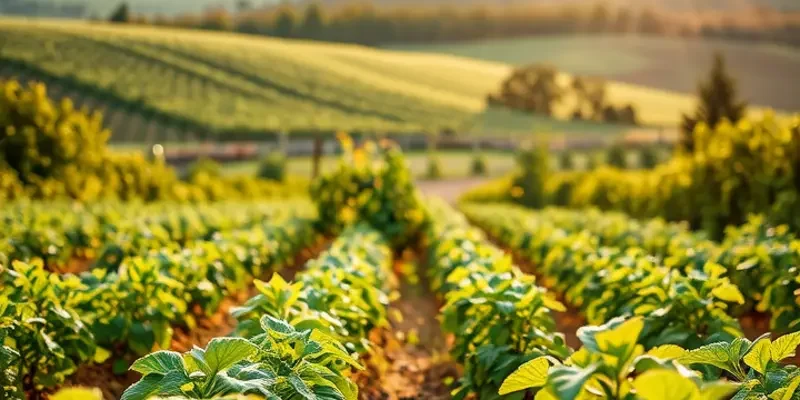Cooking at home can lead to a lot of joy, but often it brings about an equal measure of waste. With simple adjustments, anyone can drastically reduce food waste and improve food management. This guide provides practical and actionable tips for safely storing food, minimizing waste during cooking, and optimizing meal planning to make the most of what you have.
Mastering Food Storage Techniques

Efficient food storage is the cornerstone of minimizing waste in the kitchen. Proper techniques not only extend the freshness of your food but also ensure you’re making the most of every ingredient. Let’s dive into a few key strategies that can transform your food storage habits.
Wrap It Right
The first step in mastering food storage is understanding the art of wrapping. Different foods require different approaches. For fresh produce like leafy greens, loosely wrap them in a damp paper towel before placing them in a breathable bag. This helps maintain humidity and prevents wilting. Hardier vegetables, such as carrots and celery, fare better when stored in water.
For meats and seafood, airtight packaging is essential. Ensure these items are sealed tightly to prevent air exposure, which can cause freezer burn. Using reusable silicone bags or glass containers can be a sustainable alternative to traditional plastic wraps.
Refrigeration Tips
Understanding your refrigerator’s layout can significantly impact food longevity. Place dairy products on the back of the fridge, where it’s coldest. Store eggs on an internal shelf rather than the door, which is prone to temperature fluctuations.
Fruits and vegetables need their specific spaces. Use separate bins for each to avoid ethylene gas-sensitive foods from ripening too quickly. To delve deeper into safe storage practices for sauces and other temperature-sensitive foods, you can explore safer storage of sauces for detailed insights.
Maximizing Leftovers
Leftovers can often become neglected residents of our fridges. To prevent this, label and date leftovers to track their freshness. Designate a specific “eat first” area in the fridge to keep older items visible. Transform leftovers creatively by incorporating them into new dishes. For instance, leftover grilled vegetables can be turned into a hearty soup or a savory sandwich filling.
Freezing with Precision
Freezing is a brilliant way to extend the shelf life of many foods. Blanch vegetables first to lock in nutrients and prevent texture changes. Avoid freezing high-moisture foods like cucumbers, as they tend to turn mushy.
Use freezer-safe containers or bags, removing as much air as possible to prevent freezer burn. Clearly label each item with the date, and rotate the oldest items to the front of the freezer for easy access. This practice ensures nothing gets forgotten or wasted over time.
Adopt a Routine
Finally, establish a weekly routine to review the contents of your kitchen. Assess perishable items and plan meals around those nearing the end of their life. This conscious habit keeps your food rotation healthy and minimizes the temptation to discard forgotten items.
Embrace these practical food storage techniques to see a noticeable reduction in both food waste and grocery costs. Implementing just a few of these strategies can help maintain freshness, boost your kitchen efficiency, and contribute to a more sustainable lifestyle.
Smart Cooking Practices for Waste Reduction

Reducing waste in meal preparation begins with smart ingredient usage. Opt for versatile ingredients that can be used across multiple meals. A bunch of carrots, for instance, can enhance a hearty stew and then be roasted as a side dish. The tops of carrots can be blended into a vibrant pesto, creating multiple uses from a single purchase.
Being mindful of portion control is another cornerstone of reducing food waste. It not only ensures balanced nutrition but also limits leftovers that might go unnoticed in the back of the fridge. To achieve this, use smaller plates to manage portions. Over time, this practice naturally aligns cooking habits with realistic consumption, limiting surplus meals.
Embracing creativity with leftovers can revolutionize the way we think about surplus food. Leftover vegetables can transform into a comforting soup or join an omelet for a quick breakfast. Stale bread becomes hearty croutons or the base of a classic bread pudding. Each transformation prevents food from languishing in the waste bin, thereby respecting both the food and the effort involved in its preparation.
Batch cooking is a technique that, when done wisely, can significantly cut down on food waste. Preparing larger quantities for freezing ensures you have healthy options available on busy days, reducing the temptation to turn to takeout. For more insights on meal preparation, explore minimal prep dinner ideas.
Moreover, when planning meals, consider the harmonious dance of flavors and textures. This thoughtful curation not only elevates a dish but marks usable combinations for later meals. For example, a roasted chicken dinner can become the hero of a next-day salad or sandwich filling, without feeling repetitive or dull.
Efficient use of every component of your ingredients not only minimizes waste but can enhance the flavor profile of dishes. Chicken bones transform into a rich stock, adding depth to risottos or sauces, embodying a nose-to-tail philosophy. Similarly, leftover herb stems lend subtle notes to stocks and soups, demonstrating that no part is too small to make a difference.
Adopting these strategies forms habits that not only nurture a more sustainable kitchen but also cultivate a creativity that turns potential waste into culinary opportunity. By innovating with what was once seen as refuse, home cooks can contribute actively to reducing kitchen waste while discovering new and delightful flavors. Smart cooking practices invite us into a more mindful relationship with our meals, fostering both environmental sustainability and a deeper appreciation for the artistry of cooking.
Final words
Cooking with awareness and efficiency not only benefits your kitchen but also the environment. By mastering food storage techniques and adopting smart cooking practices, anyone can contribute to reducing food waste at home. Embrace these actionable tips, experiment with leftovers, and plan meals that utilize every bit of what you purchase. A mindful approach to cooking and food management can lead to delicious meals while significantly decreasing waste and fostering a sustainable lifestyle.







